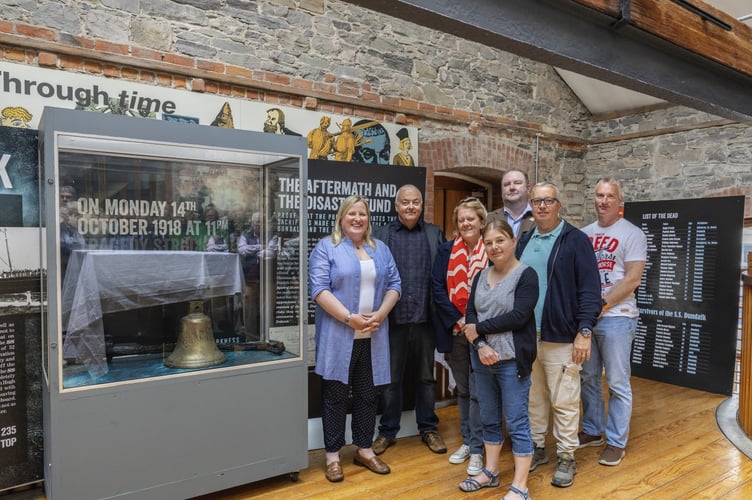A team of divers from the island has visited Ireland to bring the bell of the Steam Ship Dundalk back to a grateful town.
The divers from Discover Diving in Port St Mary were guests of honour as the bell, its wrought-iron hanger, a porthole and a washbasin from the wreck were handed over to the Louth County Museum in Dundalk.
The Dundalk and Newry Steam Packet Company flagship SS Dundalk was attacked on October 14, 1918 by a German U-boat whilst on a return trip from Liverpool to Dundalk.
A total of 21 people were lost in the sinking and only 12 survived. Some of the survivors were brought to Douglas.
Most of the crew were local to the Dundalk area.
In 2018 a committee of descendants of the crew unveiled a memorial clock on the Castletown River waterfront in Dundalk to those who were tragically lost just before the end of hostilities in 1918.
The bell was recovered by divers Steve Cowley, Michelle Haywood and Kathryn Fowler in July 2019. Anne Corkill and Dave Copley recovered the basin and porthole.
Extensive conservation followed to remove more than 100 years of encrusted marine life and preserve the artefacts.
The washbasin was painstakingly cleaned by hand to remove barnacles and reveal almost intact porcelain glaze. The wrought-iron hanger was the most challenging and underwent months of reverse electrolysis and a two-week drying out process to stabilize and preserve it.
Remarkably, the bell still had traces of the black enamel paint used to highlight the engraved letters of the ship’s name.
The finds were declared to the Receiver of Wreck who awarded ownership to the divers.
A long-term loan to the County Museum was arranged to ensure that the bell returned to its original home.
However, plans to travel to Ireland in 2020 were thwarted by the outbreak of Covid-19 and the closed borders, so the bell remained in Port St Mary until this year when the team were able to travel across.
Dr Haywood explained: ‘This is not the sort of thing we could send in a parcel. It’s just too precious for that.
‘The ship’s bell is such an iconic part of any vessel. It was only right for us to travel over to present our finds to the town of Dundalk.’
In a reception at the Museum attended by more than 100 relatives and friends, the bell was finally unveiled and the dive team were presented with copies of the commemorative book produced for the centenary.
Museum Curator, Brian Walsh said: ‘It is impossible to overstate just how important these items are.
‘These artefacts are being returned to the port from which the ship took its name.
‘These items not only represent the horrors of what happened that night and the loss of so many lives, they represent the relief efforts of those people who set about organising fundraisers to support the families of those who lost loved ones, and remind us of our ancestors, how they survived and thrived through some of our darkest hours.’




